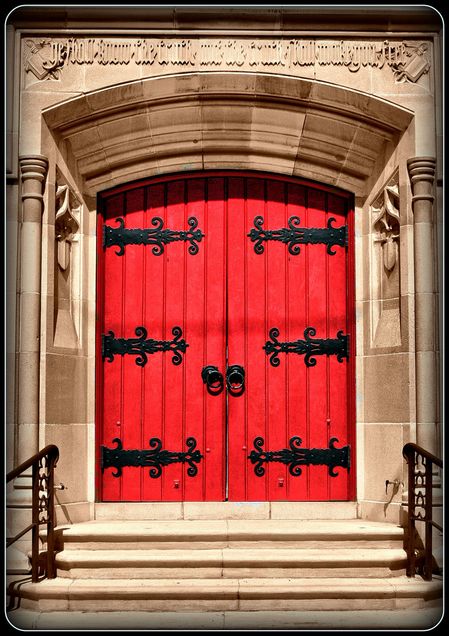How Ministry Leaders Can Make Worship More Accessible
Did you know that this year marks the 25th anniversary of the signing of the Americans with Disabilities Act? Despite the fact that the ADA is a quarter-century old, many religious institutions remain horrendously inaccessible for people with disabilities.
 Here are six simple ways places of worship can extend a welcome to people with disabilities:
Here are six simple ways places of worship can extend a welcome to people with disabilities:
1. Conduct an accessibility audit
No one is going to feel welcome if they cannot get inside the building (or the bathroom)! The United Methodist Church offers an accessibility audit form that lists measurements for doors, sinks, and other fixtures that make them much easier for people with disabilities to use. An accessibility audit does not have to be done by professionals—it could be a great project for a youth group or Sunday School class. Whenever possible, someone with a disability should be included in the audit, as they may notice things that would otherwise be overlooked.
2. Provide transportation to and from events
Transportation is an enormous hurdle for people with disabilities, who in many cases cannot drive. Even where public transportation exists, it often is not accessible to wheelchair users and others with mobility issues. Getting from Point A to Point B thus becomes a giant logistical headache. Volunteers who are willing to transport others in their own vehicles or an accessible van can make a huge difference!
3. Train volunteers and staff in disability etiquette
Accessibility is not just physical, but also attitudinal. United Spinal Association has published an easy-to-read and fairly comprehensive disability etiquette handbook that might be a good starting point. Such training will help people recognize and avoid harmful stereotypes.
4. Explicitly welcome people with disabilities to events
Many places of worship have mission statements that welcome diverse groups of people to participate—and name every possible people group except for people with disabilities. This only magnifies the feeling of being overlooked! Welcomes should not include euphemistic language such as “differently-abled” or “physically challenged.” Many people with disabilities find these phrases offensive. It is also a good idea to include a note in bulletins and programs inviting people to share any accessibility concerns they might have with a designated staff person.
5. Watch out for ableist language
Christian scriptures are filled with disability-related metaphors (i.e., “spiritual blindness”) and stories of healings that cast disability in a negative light. It is important to know that many people with disabilities view their disabilities not as problems that should be healed, but as essential parts of their identities. Thus, these stories and metaphors must be analyzed critically. Many hymns contain similar language, and use outdated words like “lame” to describe disability. Omitting verses or offering suggested changes to the wording can help alleviate this problem.
6. Present material in a variety of formats
Many worship services rely heavily on spoken word and song, which may not be the most effective way to reach congregants with hearing loss or certain learning disabilities. Print all lyrics in the bulletin, and have printed copies of the sermon available upon request. Try techniques like breaking the congregation into small groups for discussion or including liturgical dance or visual art in services. This will likely make worship more enjoyable for everyone involved!
Caroline Bass is a third-year MDiv student at Boston University School of Theology, graduating in 2016. She is pursuing ordination as a deacon in the North Georgia Conference of the United Methodist Church and plans to become a hospital chaplain.






